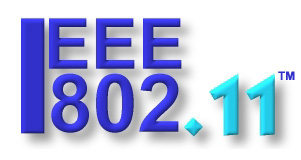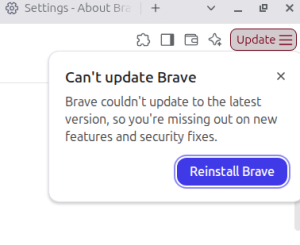Wireless Networking Basics V: Site Surveys for Wireless Networks

One of the biggest challenges to designing and implementing a wireless network is deciding where to put your access points. Many environmental factors, including rain, trees, and concrete walls, can impact the signals from wireless routers. In cases where families simply want to take advantage of the convenience of wireless routers in their own homes, this may not be so much of a problem. They can simply identify anything in their own home that might create dead zones, install the device in a convenient place that will allow maximum coverage, and then roam through the house with a wireless-capable laptop, determining the range and locating any dead zones. However, for any organization planning to install or expand a wireless network, a site survey is a good idea before the wireless LAN is installed.
Save Money and Headaches with a Site Survey
What is a site survey?
- Are there any machines or electronic devices that emit radio waves on the premises? These include cordless phones, satellite dishes, microwave ovens, lighting and cranes. These devices can interfere with the wireless LAN’s signal.
- Will the wireless technology be used inside, outside, or both? If it is inside, concrete walls, heavy machinery and electric wiring will be a factor in planning your network. If it is outside, trees, rain, lightning, parked cars, and electric lines may interfere with the signal.
- Will employees be opening and closing office and conference room doors?
- Will machinery be moved from location to location on a regular basis?
- Does the company have plans to expand and/or add more people?
- Can there be interference from signals outside the organization?
- Are there plans to redesign offices and move walls or partitions?
Design Goals
- Achieving the best possible performance from the WLAN
- Certifying that the installation will be implemented as planned.
- Developing networks optimized for a variety of applications.
- Ensuring that the coverage will fulfill the organization’s requirements
- Locating any unauthorized access points on the network
- Mapping nearby wireless networks
- Reducing radio interference as much as possible
- Securing the wireless network.
- Determining a realistic understanding of the infrastructure required for the wireless link.
- Predicting network capability and throughput
When should you do a site survey?
- Before making changes to an existing wireless network.
- When there are significant changes in personnel or a significant increase or decrease in network usage. New employees may use the network differently than those who have been there for a while, and changes in company needs will cause changes in network usage.
- Before and after making physical changes in a building. Remodeling may introduce new environmental signal interference.
Site Survey Tools
Site survey tools can come in one of three categories: Wireless tools, measurement tools, and documentation tools. Because a site survey focuses on the proper location of access points, the most basic tool of a site survey is the access point itself. It may be necessary to temporarily position the access point in one location and then monitor the radio frequency signal from other locations. It is important that the actual type of access point that will be deployed is used when conducting the site survey. Access points used as wireless tools in site surveys should first have the ability to adjust the output power. Most consumer-grade access points do not have this capability.
External antenna connectors are another requirement for access points used in an access points. This allows for different configurations to be connected to an AP in order to perform different types of tests. The most common type of antenna for a WLAN is an omnidirectional, or dipole, antenna. Omnidirectional antennas send out their signals in all directions equally. High-gain dipole antennas may behave differently if placed in the same direction because the signal is stronger. It may be advisable to test both, as well as semi-directional and highly-directional antennas, to determine the best signal pattern for the area.
Another essential wireless tool is a notebook computer with a wireless NIC. This is used to determine signal strength from the AP. Some may prefer to use PDAs instead of heavier laptops, but there are disadvantages, such as a smaller screen size (which makes it harder to read graphs). Some industry experts also believe that it is best to simulate the environment with the actual type of equipment that will be used. PDAs have diminished in popularity as cell phones have added many of the capabilities that PDAs are commonly used for. The wireless laptop used in the site survey should be configured and tested before the site survey is conducted because a faulty wireless signal can generate inaccurate data. One should also have the battery fully charged and have a spare on hand, also fully charged.
Measurement tools include site survey analyzers, spectrum analyzers, and network analyzers. Although each of these three types can be found as separate hardware devices, it is becoming more common for these tools to be software-based programs on a laptop computer. This makes a site survey less cumbersome because you have to carry less equipment.
Site survey analyzers are measurement tools specifically designed for conducting a wireless LAN site survey. Many access points for WLANS include software that measures RF signal strength. The chipset in 802.11 devices includes a Receive Signal Strength Indicator (RSSI) value which is used to determine different factors, such as when a transmission is allowed, when a roaming device should be associated with a different access point, and what transmission speed should be used. Vendors use an algorithm or lookup table to convert RSSI values to dBm, mW, or signal strength percentage.
Site survey analyzer software can be either basic or more full-featured. A full-featured software program will include:
- Destination MAC Address specifies the AP that will be involved in the test. The default is the MAC address of the access point with which the client adapter is currently associated.
- Continuous Link Test. Checking this box will cause the Active Mode test to run repeatedly until the Stop buton on the Site Survey page is clicked.
- Number of Packets sets the quantity of packets that will be sent during the test.
- Packet Size sets the size of packets sent during the test. This setting should be the size normally used during normal use of the WLAN.
- Data Retries sets the number of times a transmission will be repeated if an ACK frame is not returned by the destination device.
- Data Rate sets the bit rate at which packets will be transmitted.
- Delay Between Packets is the delay in milliseconds between successive transmissions.
- Packet TX Type sets the packet type used during the test. Unicast means that a frame is sent from one sender to a single receiver. Multicast means that a frame is sent from one sender to multiple receivers with a single transmit operation. If it is set to Unicast, the station will expect an ACK frame back and will continue to retry if it does not receive one. The Multicast option does not perform packet retries.
- Percent Success Threshold allows the user to establish a baseline for what is considered satisfactory performance.
Statistics are generated in real time with most programs. Common site analyzer programs include NetStumbler, Rollabout, AirMagnet Site Surveyor, Wireless Valley, and Ekahau.
Documentation Tools
The purpose of documentation tools is to create a “hard copy” of survey results for future reference. There is no industry-standard form for site survey documentation, so the format of the reports can vary from program to program. The reports should contain the following information:
- Purpose of the report
- Survey Methods
- RF coverage details (frequency and channel plan)
- Throughput findings
- Sources of interference
- Problem zones
- Marked-up facility drawings with access point placement
- Access point configuration.
Other good tools for performing your survey include:
- Plain paper and a blueprint of building layout for taking notes as you perform your survey
- Digital Camera to take pictures of points that you want to analyze later or places that would work well for wireless equipment. It doesn’t really have to be professional quality since you’re not exactly handling wedding photography, but I’ve had good luck with a modest Canon 12.1-MP model.
Performing A Site Survey Part 1: Gather Data
A lot of your work will be performed prior to setting up the access point for radio frequency testing. This preliminary work of gathering data about matters unrelated to radio frequencies is a critical part of the site survey. This includes obtaining the business requirements of the WLAN, defining the necessary security requirements, gathering site-specific documentation, and documenting the existing network characteristics.
Obtaining Business Requirements is the first step and involves determining the business reasons why a wireless LAN is being proposed for the organization, or why an existing wireless network is being expanded. Setting out these reasons in a clear fashion will help you better design and implement the network. Some business owners and managers choose to install a WLAN because “everybody else has one,” while other, savvier operators will have a clearly defined estimate of how a WLAN will benefit them. Some questions to answer include: Will the users be continually in motion, or working from fixed points throughout the site? Can the desired mobility be achieved with a single access point in common meeting areas, or will you need multiple APs throughout each floor? Another consideration will be the bandwidth that will be required by the users. If the users use VoIP-based programs, such as Skype, they will need more bandwidth than if they used e-mails and PM for their primary communications over a network. Areas such as conference rooms may need additional access points.
Defining security requirements is an important consideration when gathering data for site surveys. Most organizations will want to encrypt their sensitive data. Types of authentication and current security policies and procedures should also be considered.
Gathering site-specific documentation involves collecting blueprints, facility drawings, and other documents that show specific building infrastructure components. These include electrical outlets for access points, potential sources of RF interference like elevator shafts, and the type of ventilation system which may dictate placement of access points. Keep in mind that blueprints may not reveal the current state of the building, especially if it is older. Walls may have been altered, removed or added; electrical outlets installed; or offices carved out of what was once open space. Because of this, it is a good idea to visit the site and do a walk-through with the purpose of noting any changes to the blueprints. You may wish to take a ladder, flashlight, and cell phone for “peering” into remote locations. Some organizations may require that you have an approved escort in case you need to enter areas that may be off-limits to most people.
Documenting existing network characteristics is very important when seeing how a wireless LAN will fit in with existing resources. This includes allowing for existing WLAN properties, including the wireless standards already in use. If you have an existing 802.11b network, for example, it may be desirable to upgrade the existing devices to 802.11g and install new 802.11a devices. You should also consider the degree to which the wireless network will interact with existing wired networks. Some legacy systems, such as older mainfram networks, may not support WLANs without additional hardware or software. Token ring networks, for example, will require a gateway or interface to be compatible with IEEE 802.11 WLANs. Also, roaming from one access point located on one IP subnet to an access point on another IP subnet in an Ethernet network causes loss of connectivity, so you should consider setting up the WLAN on its own subnet. You might also consider using Mobile IP, which is suitable for a smaller number of users and access points.
Performing the Survey Pt 2: Collecting RF Information
In each area where the wireless LAN will be installed, you should place an access point in what may appear to be the most logical location. You should take into account the layout of the area and any environmental factors like trees (if outside), concrete walls, mirrors, doors, furniture, and filing cabinets. The positioning of the AP is not necessarily where the final placement of the AP will be. If an omnidirectional antenna is used, then you should place the AP in the center of the room or coverage area, or as close to the center as is reasonable. If a semi-directional antenna is used, then you should place the AP in one corner of the room. Once the AP is placed, you should document its position and the orientation of the antennas. You can do this by drawing it on a blueprint or map of the area you are surveying, along with notes. A picture taken with a digital camera is also very helpful.
Using a laptop with the site survey analyzer of your choice, you should start at the closest possible point to the antenna and slowly walk away in one direction. While walking, observe and document the data displayed on the analyzer software. Make sure you document the data rate, signal strength, noise floor, and signal-to-noise ratio. This data, recorded in every area where you plan to install the WLAN, will help you determine the coverage patterns, data rate boundaries, throughput, and total transmission range.
The coverage pattern is the area in which the signal can be received from the AP. This area is affected by objects that interfere with the RF signal, such as mirrors, which can refract the signal, and concrete walls, which can absorb it. As a result, it is important to note the objects in the vicinity when an unexpected drop in signal occurs during this stage in your survey.
While moving away from the AP, the data rate boundaries should also be noted. The IEEE 802.11 standard is designed to maintain connectivity over as wide an area as possible. It does this by gradually dropping the transmission speed as a wireless device gradually moves away from the access point. For example, with the 802.11b standard, devices closest to the AP will get the full 11 Mbps, while devices farther away may get 5.5, 2, or 1 Mbps, depending on distance from the AP. In a real-world scenario, these boundaries can vary due to environmental factors like large objects between the access point and your test device
Packet throughput information is summarized as the number of packets sent and received and the data rates for each. If the software management tools are not equipped to test throughput, you can do this manually by using “pings” or FTP operations on large files. This provides constant network activity so you can measure packet throughput on a wireless device.
Finally, you should be able to determine the transmission range, or the farthest distance at which the AP can send data to a wireless device. Physical distance and objects in the transmission path can both affect the range.
Wireless Testing Example
Collecting Non-RF Information
Data you should collect besides RF information include noting objects and materials that can interfere with the operations of the wireless LAN. These include:
- Wire mesh security windows
- Aquariums
- Outer walls
- Ceramic or marble floors
- Concrete floors or pillars
- Security booth bullet-proof glass
- Mirrors
- Elevator shafts or filing cabinets
You should also note electrical and network connections. Although this is usually part of the blueprint or floor plan, you should ask about any changes that have been made since the document was created and make note of their locations during the walk-through.
Outdoor surveys
Outdoor surveys differ from indoor ones in a few important ways. For example, rain, fog and foliage from trees can interfere with radio signals, so you should make note of the locations of trees and make adjustments in your planning if an area gets lots of rain or fog. Also, you should allow for permits and local zoning ordinances. If an antenna will be installed on a rooftop, you should insure that the rooftop is easily accessed for maintenance and repairs.
Some additional tools, including a GPS system for tracking locations, range finder and tape measure for keeping track of distances and heights, and lighting beacons, flares or spotlights for viewing specific locations at a distance, may also be helpful for long distances.
Creating the Site Survey Report
Once you’ve completed the site survey, you should have accumulated a large amount of information. Now, you should organize that information into a site survey report. These generally have two parts, a narrative section and a graphical section.
The narrative section should begin by stating the requirements from the customer regarding what they wanted from the site survey. This ensures that the material in the report focuses on the problems to be addressed. This section should also highlight how the survey was conducted, outlining each step taken in a clear and concise manner. This helps to verify that the survey was conducted in a thorough and professional manner with no shortcuts taken. The report should also include the measurements taken during the survey. These measurements are often presented in the form of graphs.
The final part of the narrative includes recommendations for the WLAN. These should include options regarding how best to install and configure the wireless network and should always address wireless security.
The graphical section should include maps and diagrams of the coverage area. Data rate coverage maps are typical. A 2-D map is often easier to read but, with the right software, you can also create 3-D maps to emphasize certain points, such as signal-to-noise ratios. You should only use these 3-D maps if the potential customer requests them.
Going For Your Certification?
Some Wireless Networking Supplies To Consider
[simple-rss feed=”http://rest.ebay.com/epn/v1/find/item.rss?keyword=wireless+networking&categoryId1=58058&sortOrder=BestMatch&programid=1&campaignid=5337337555&toolid=10039&customid=USB&listingType1=All&lgeo=1&feedType=rss” limit=5]







